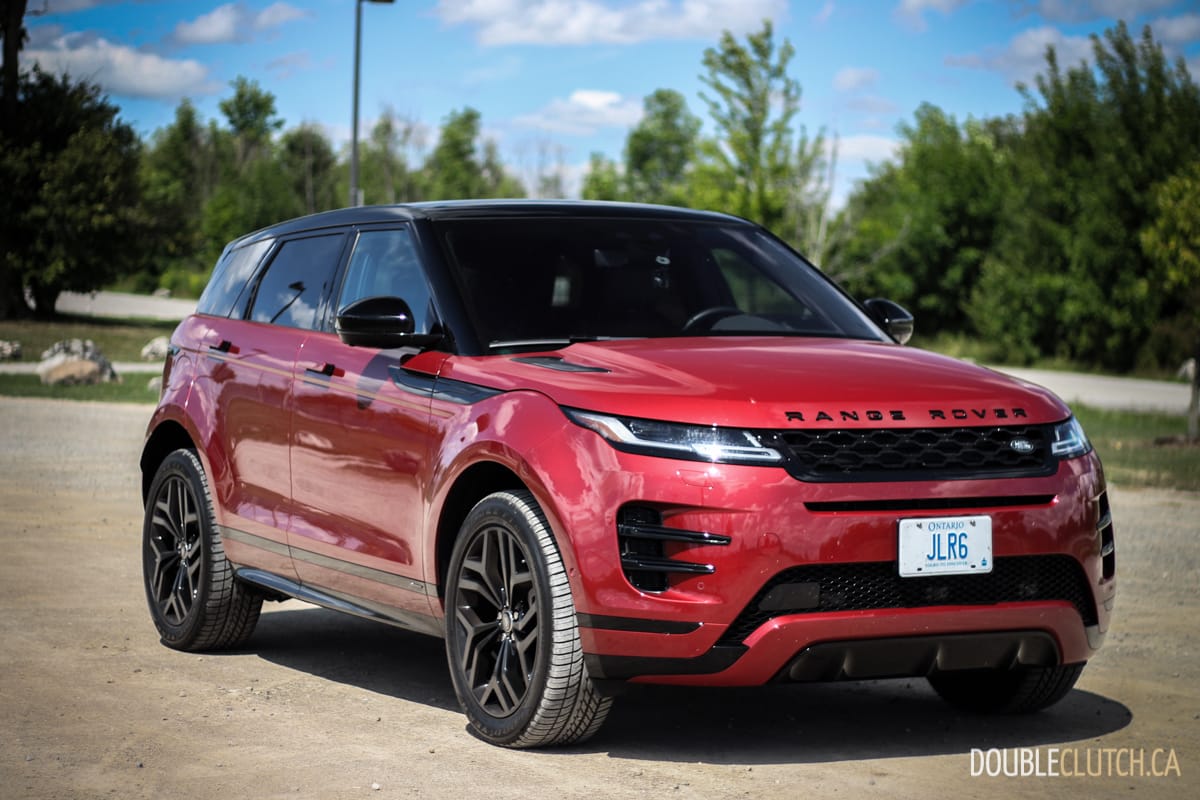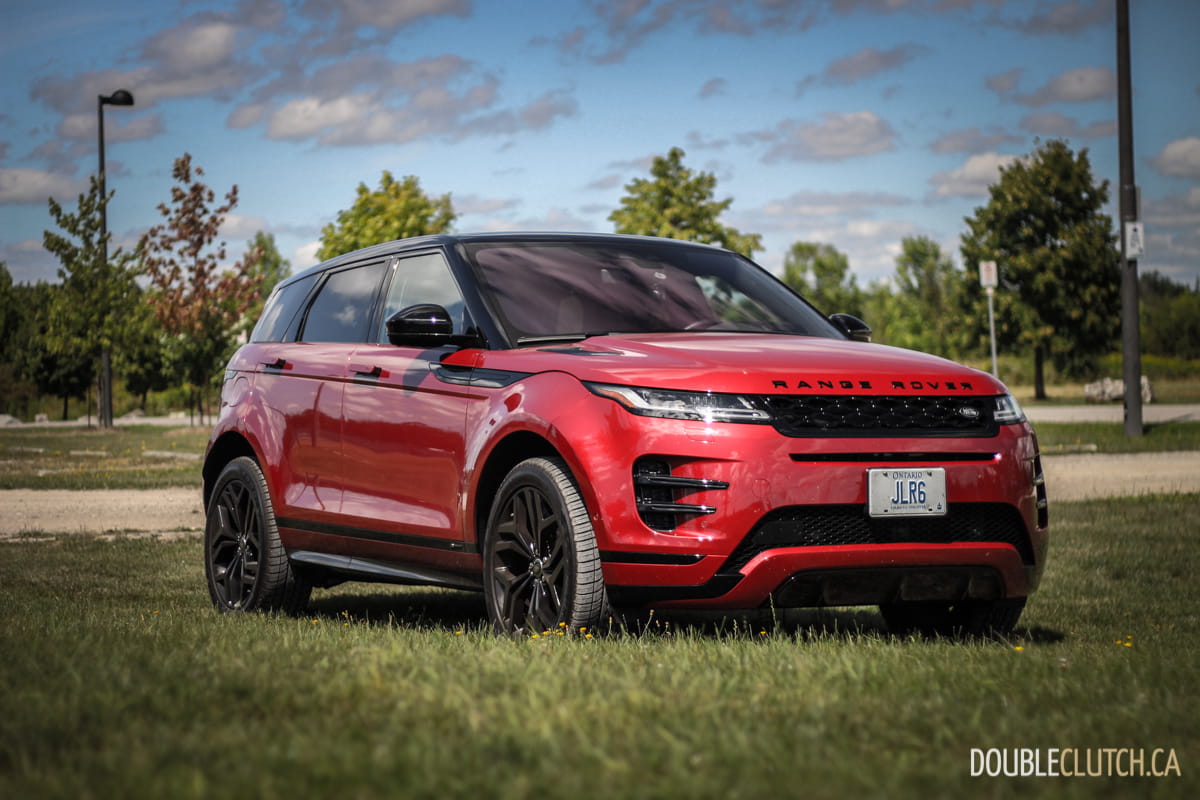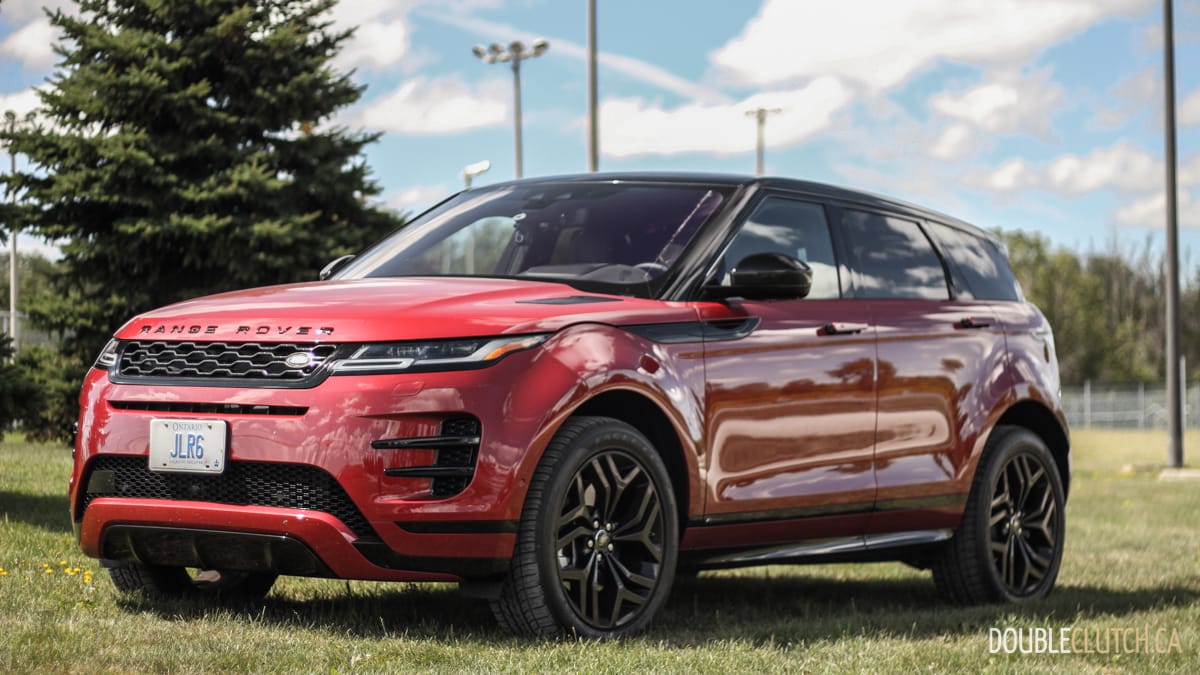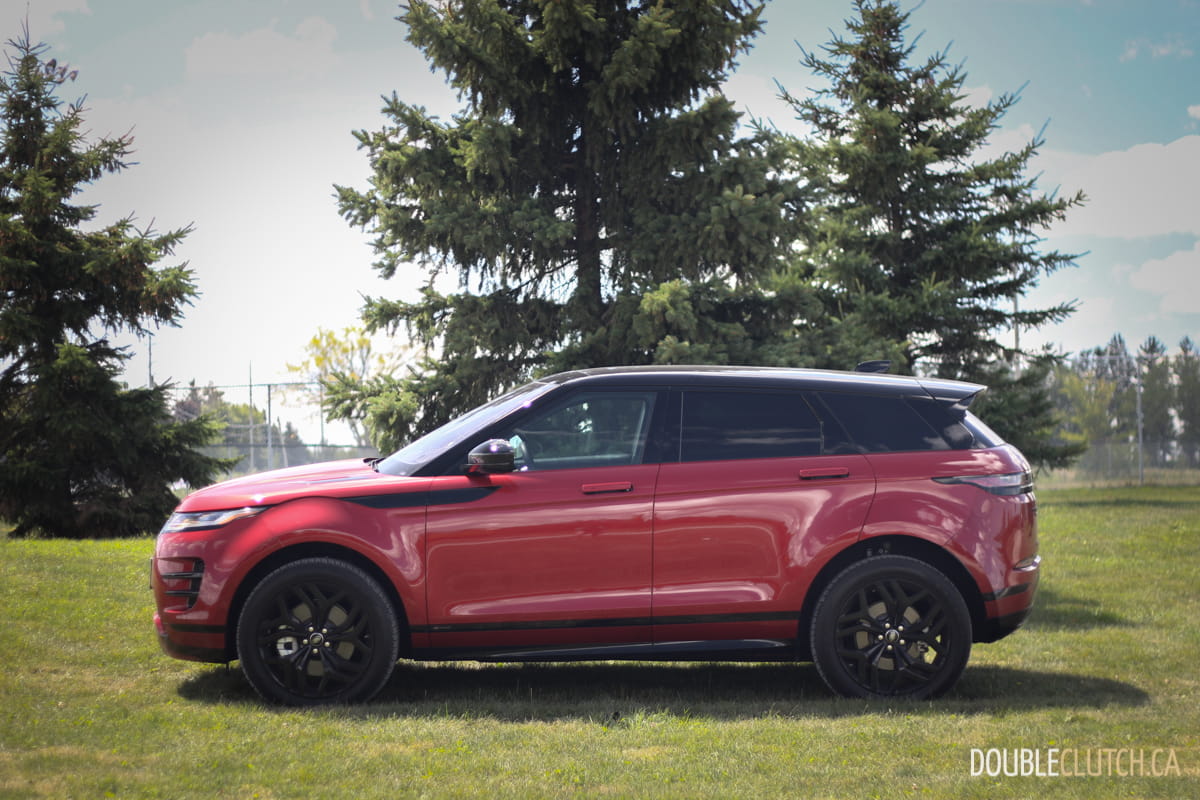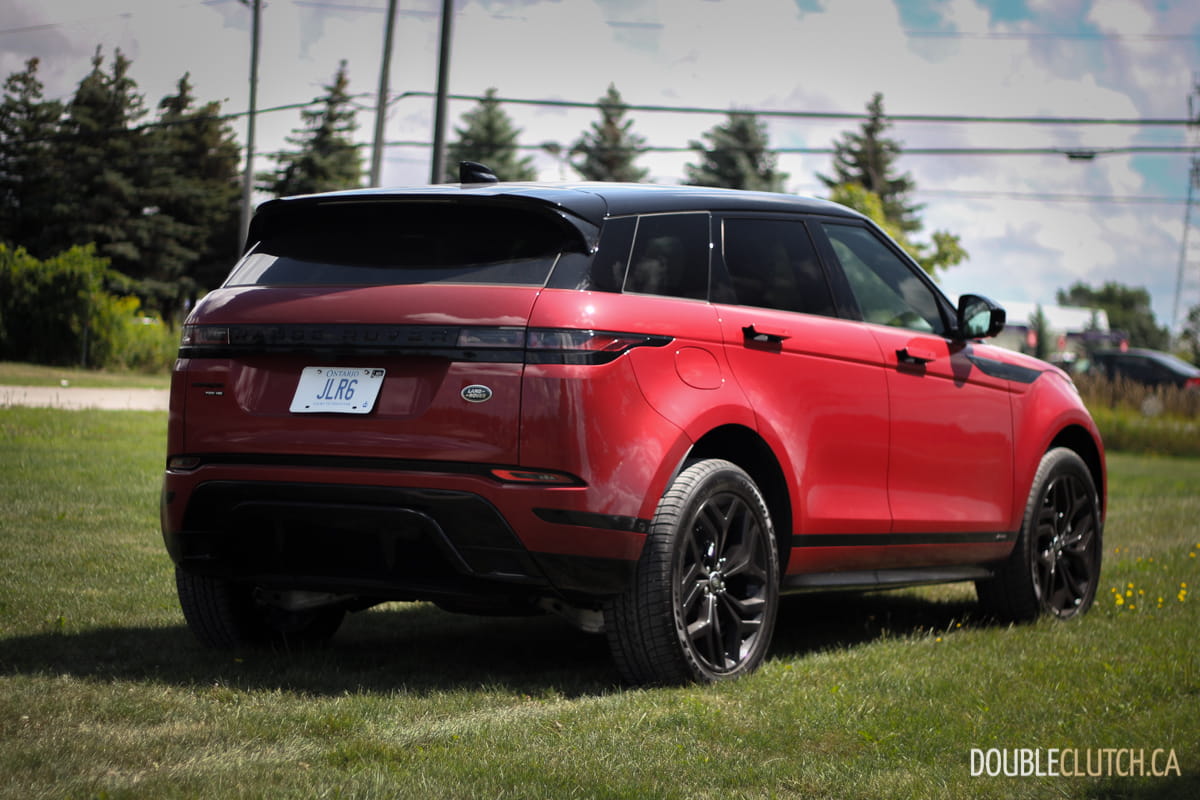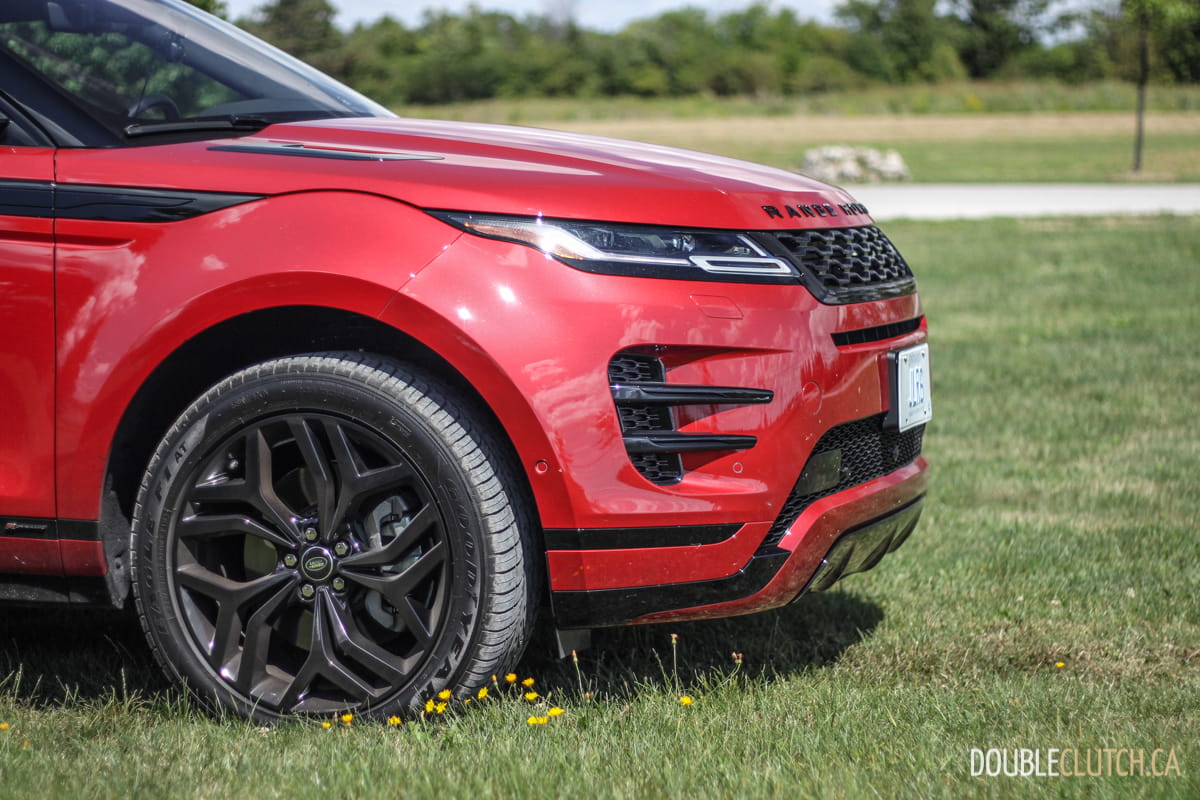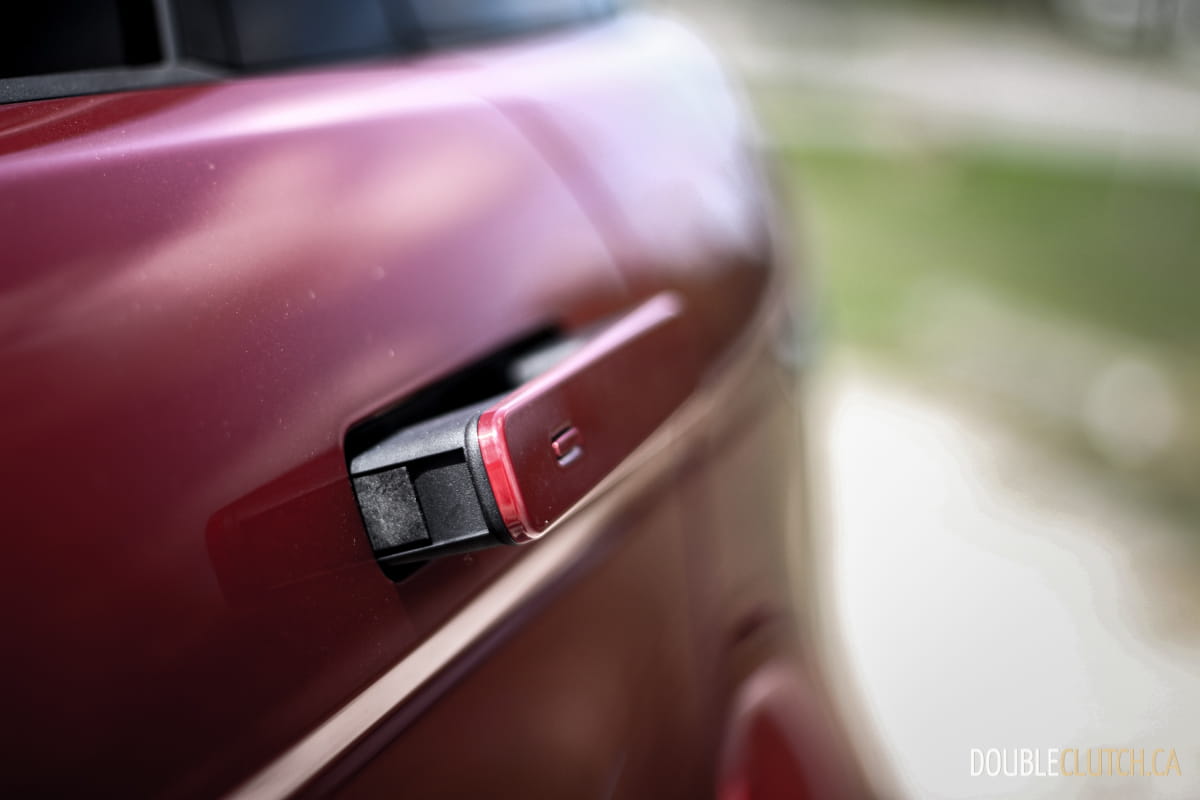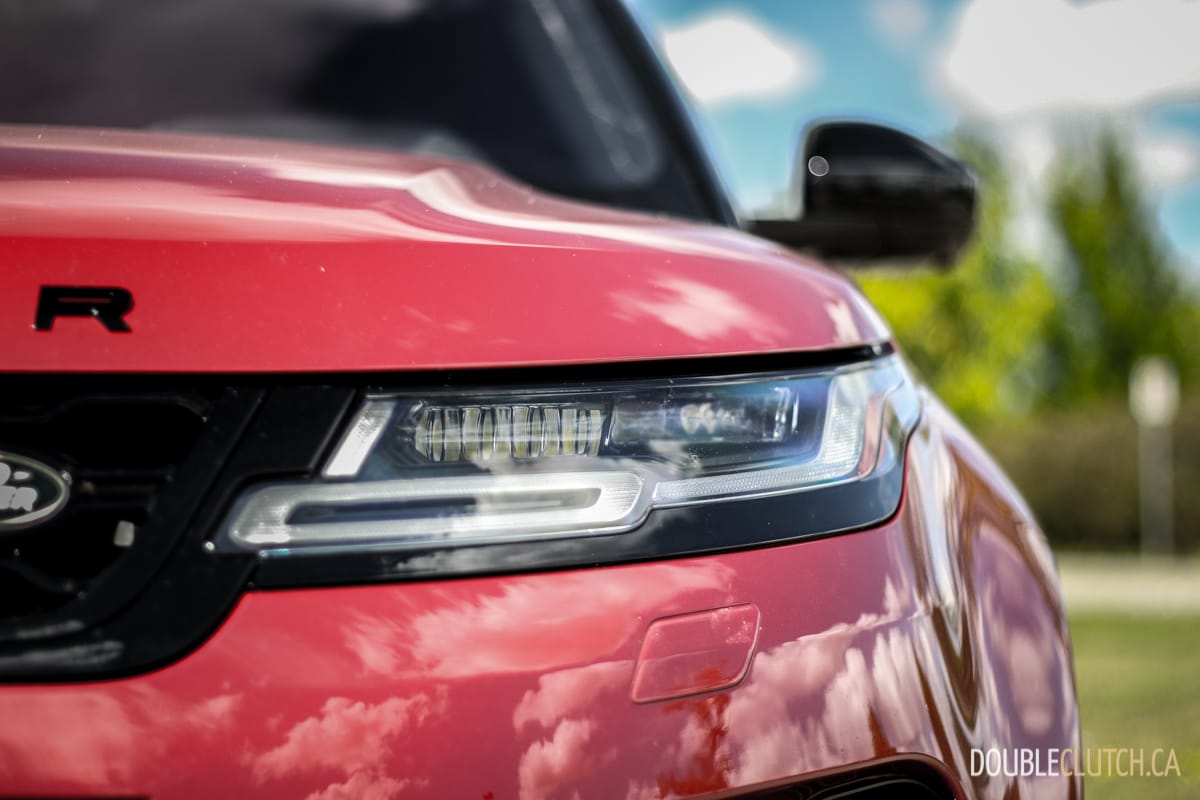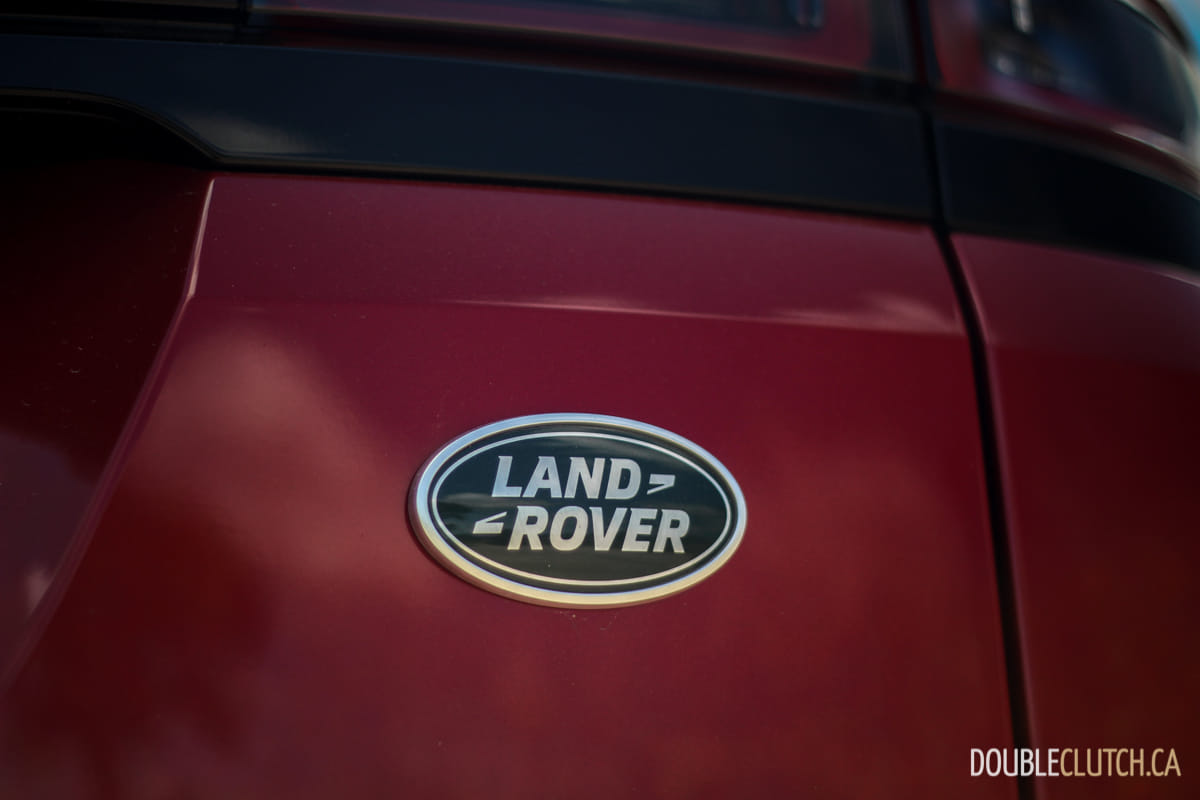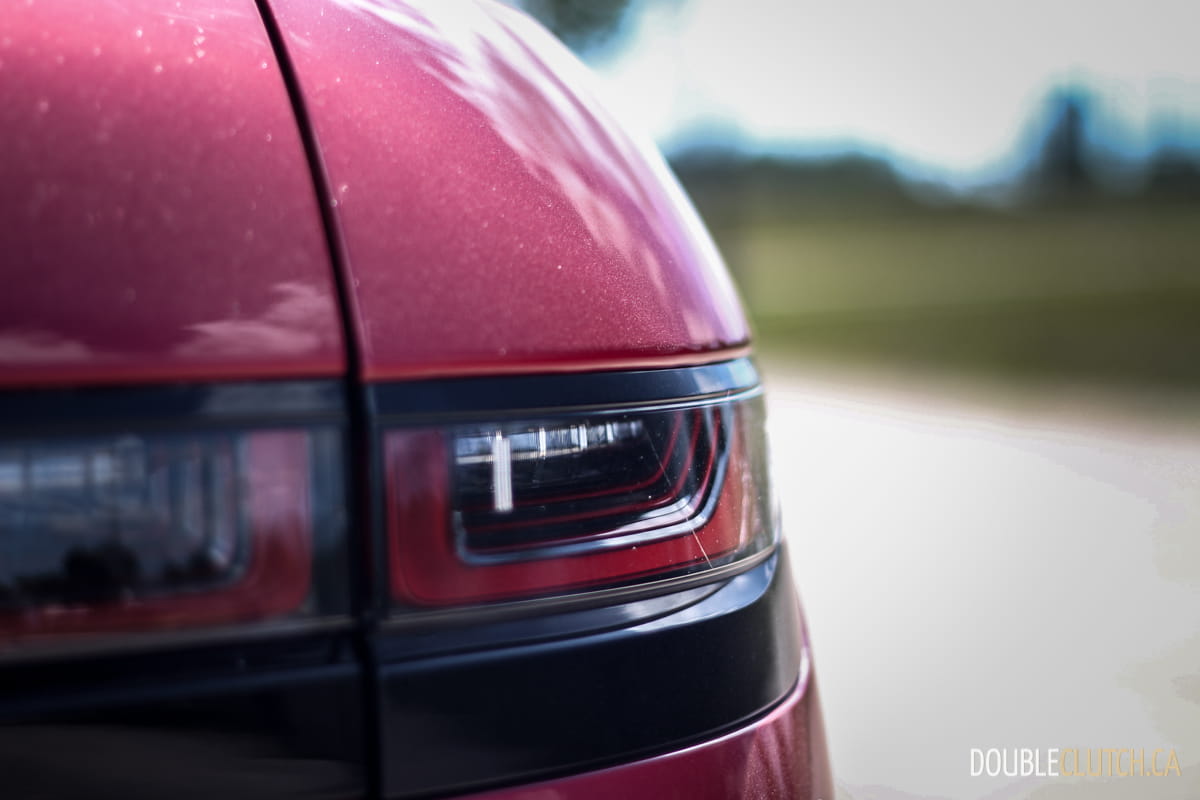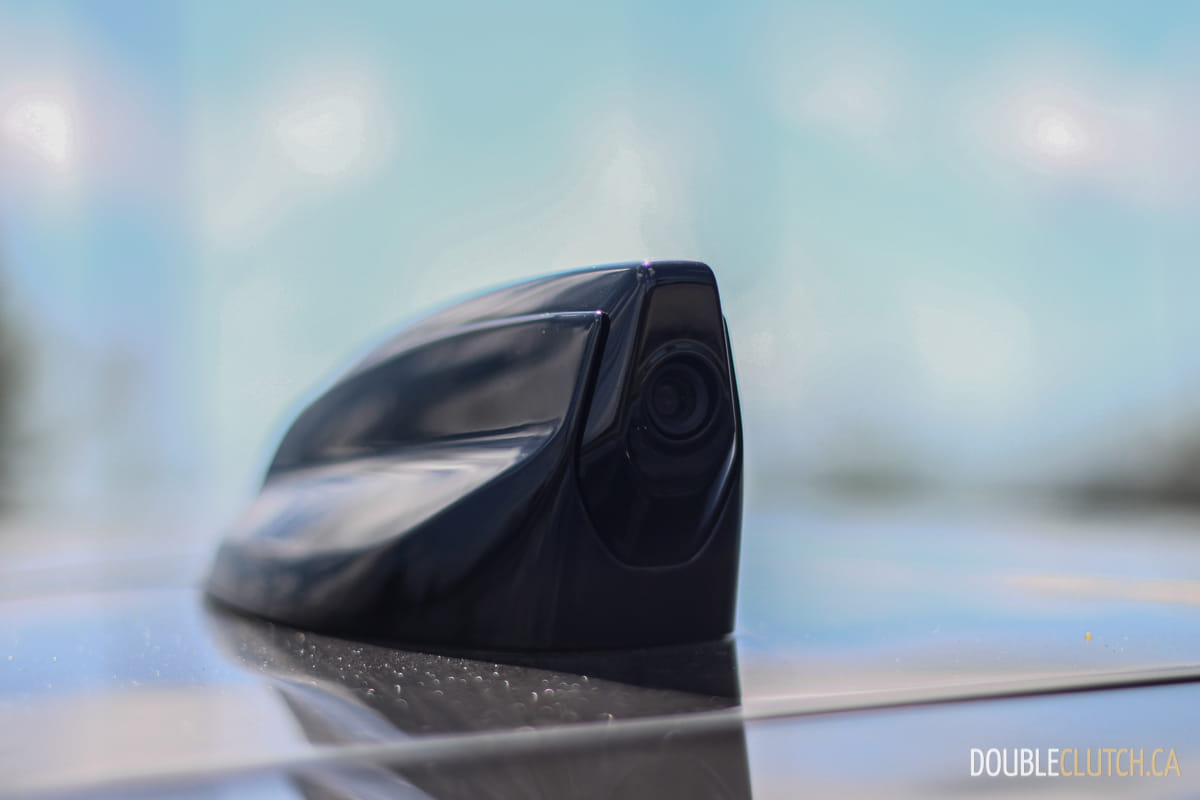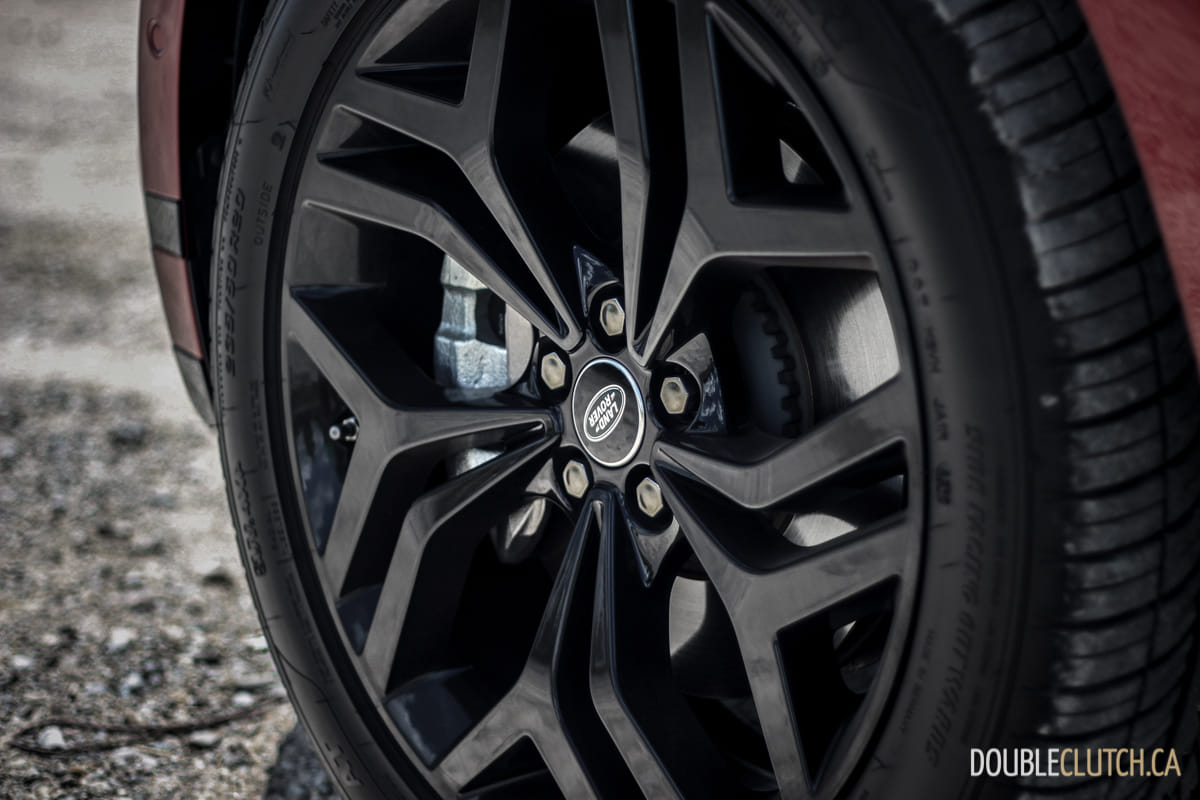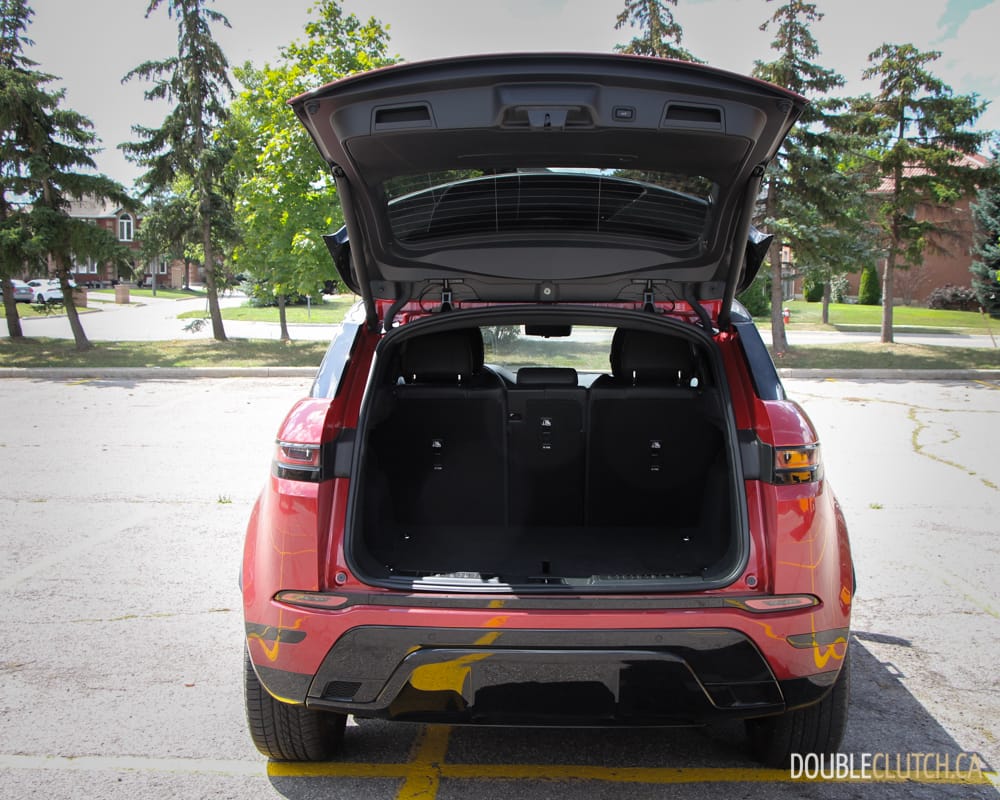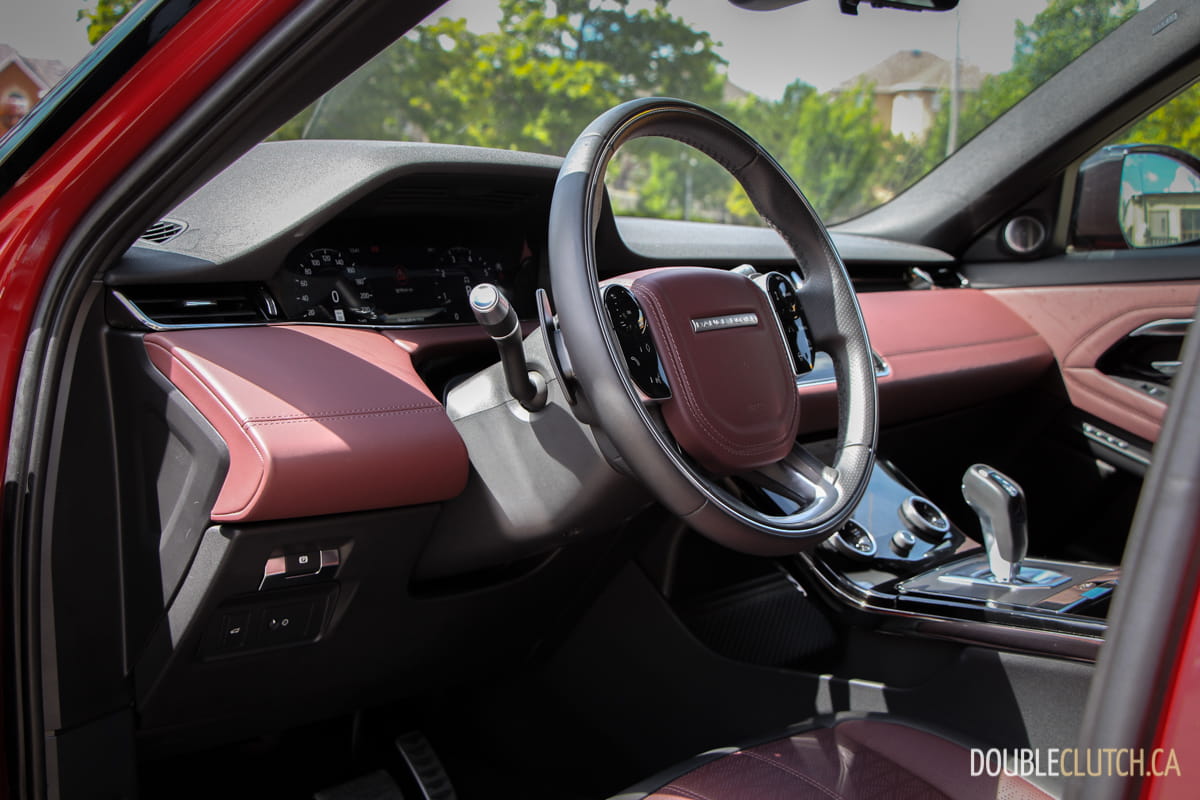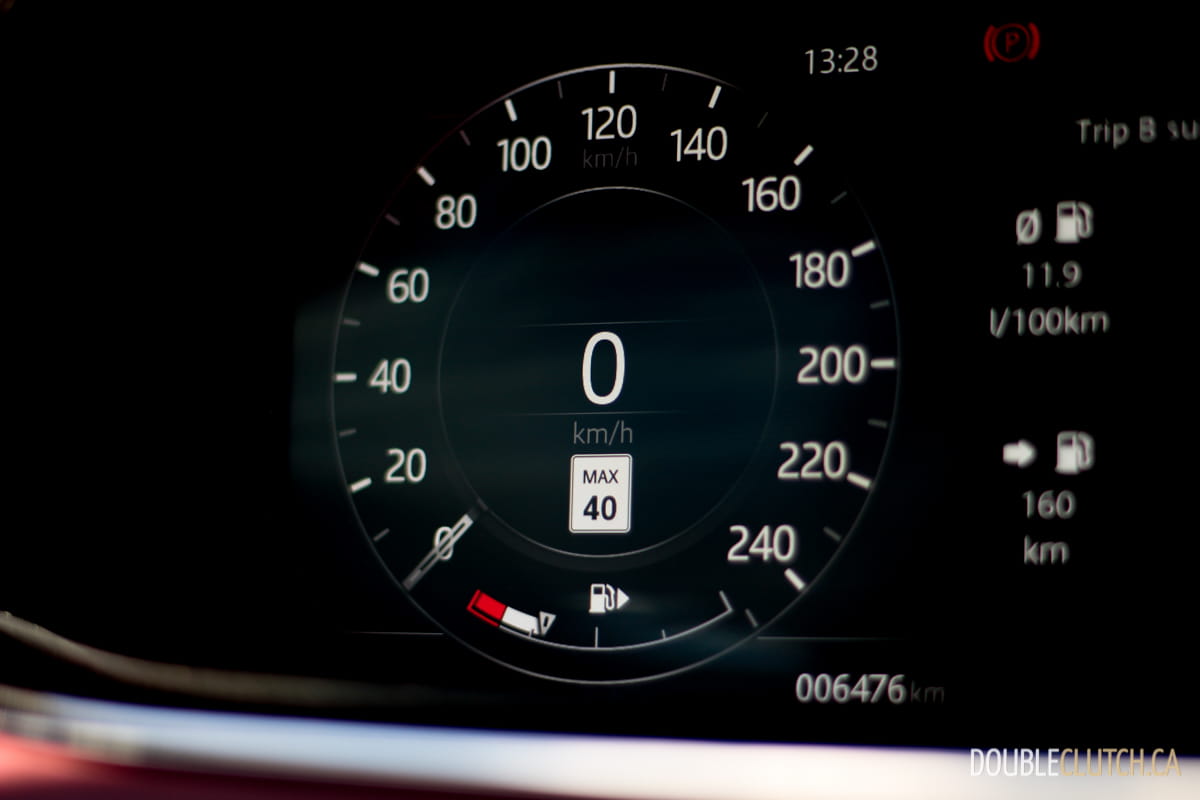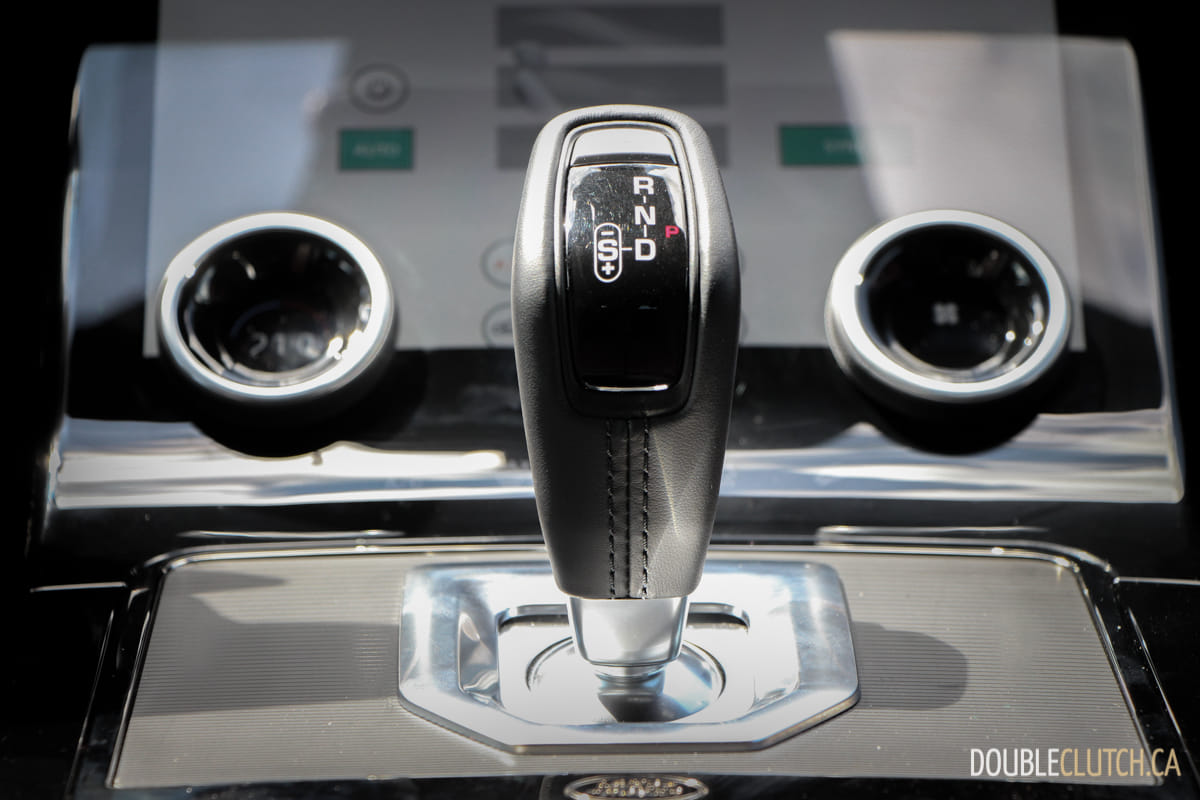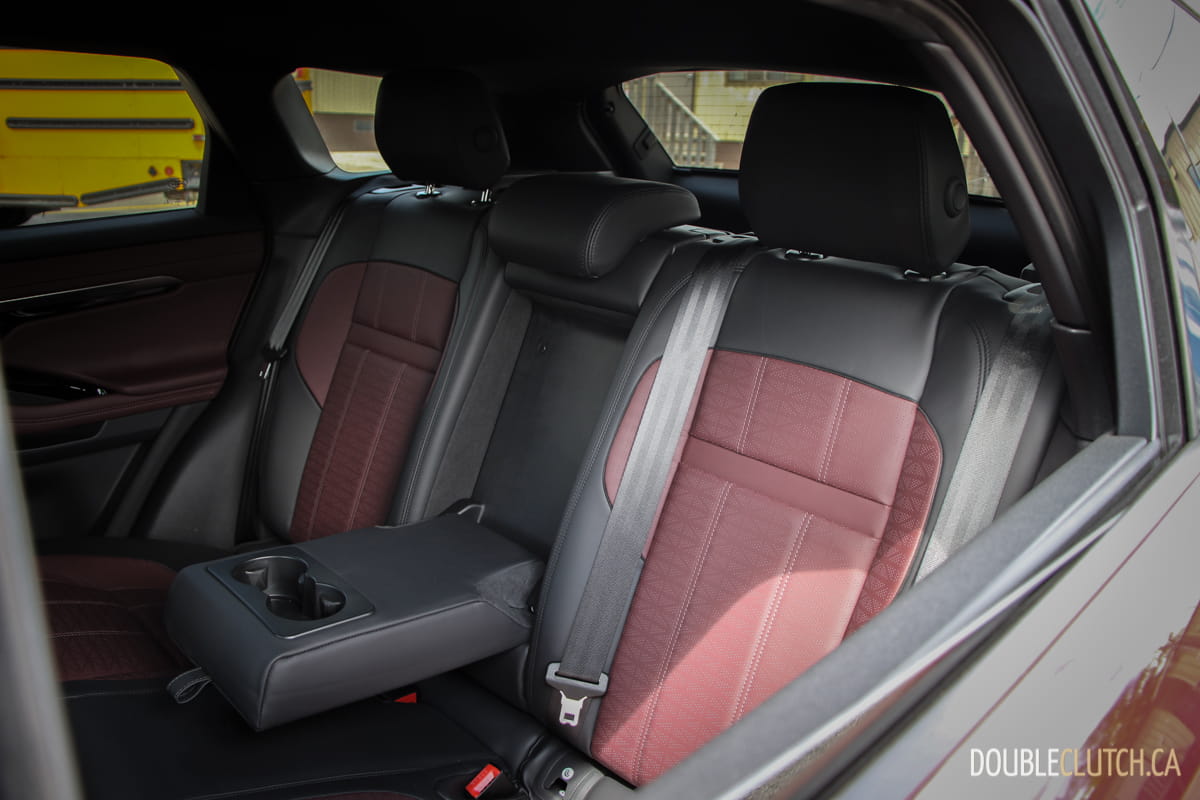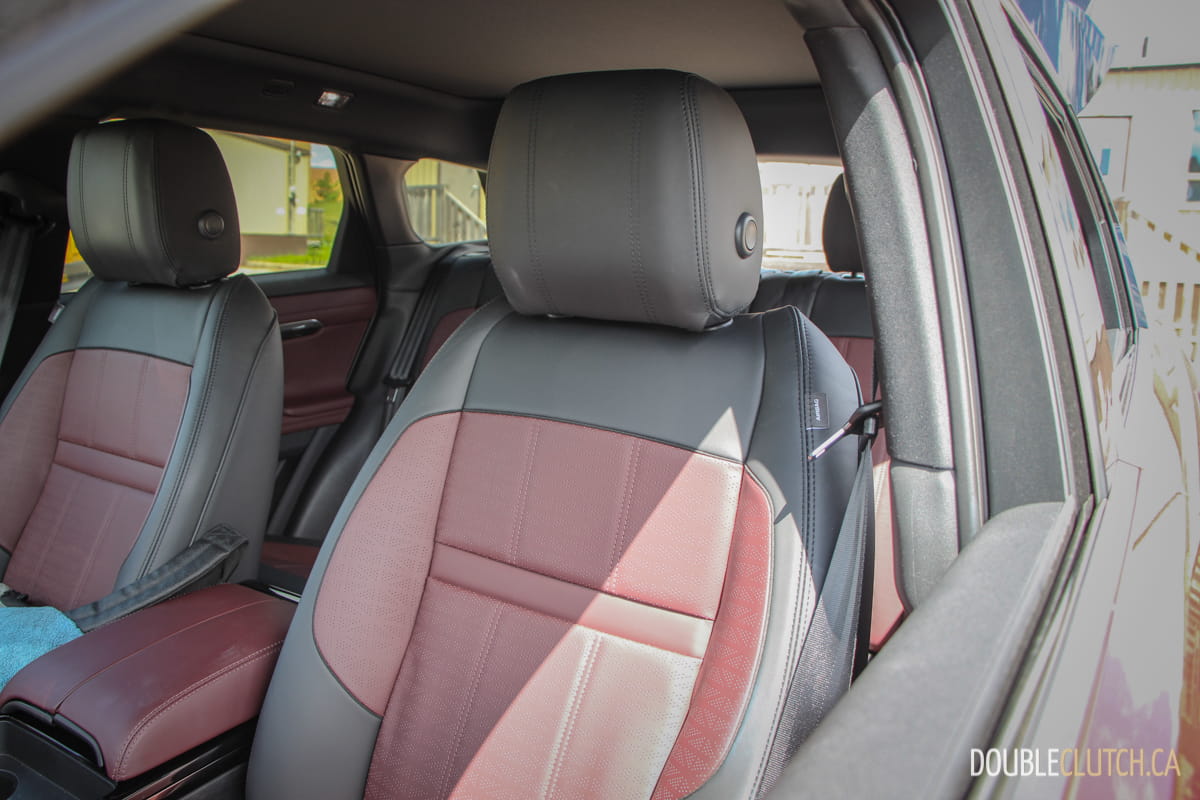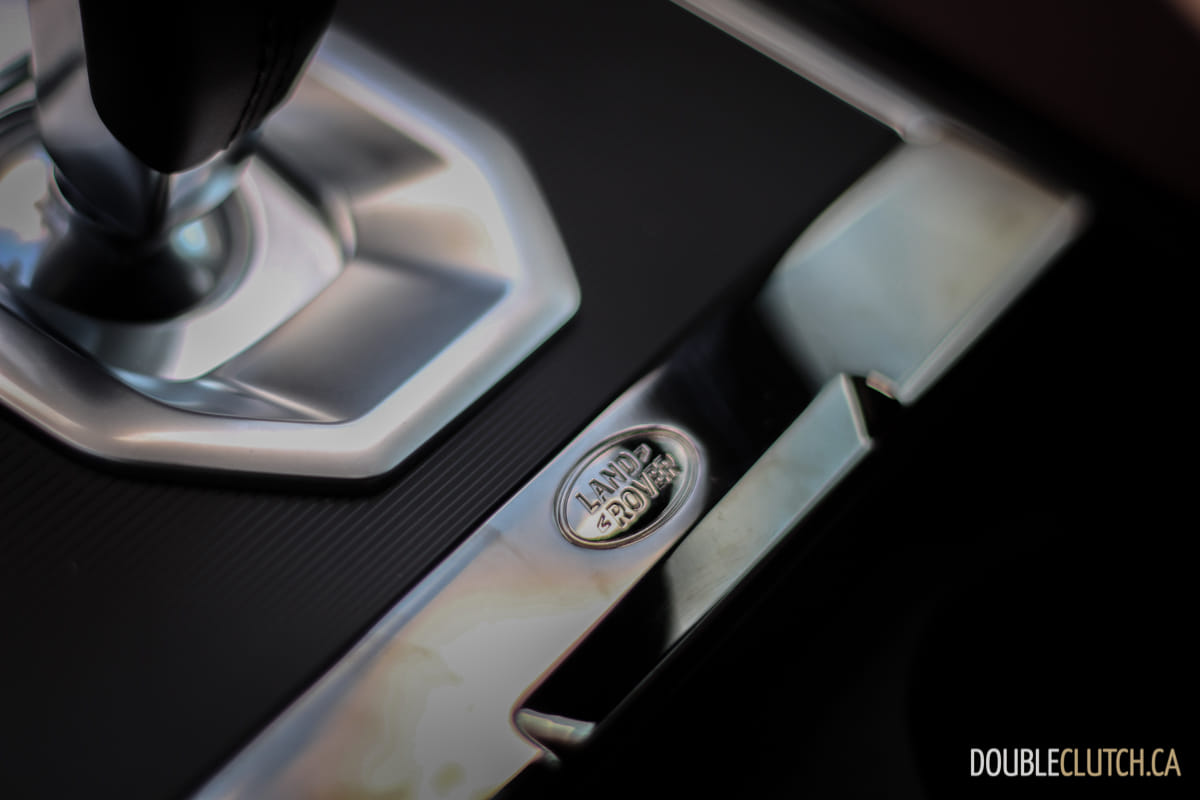The Range Rover Evoque was originally launched in 2012 and captured attention, as it was Range Rover’s first foray into a image conscious compact luxury crossover. The Range Rover brand has been an aspirational icon for years but was previously only accessible to those with large budgets and the need for a larger SUV. The Evoque changed that, entering a more attainable price point and utilizing some well-positioned advertising leveraging Victoria Beckham’s involvement in the styling.
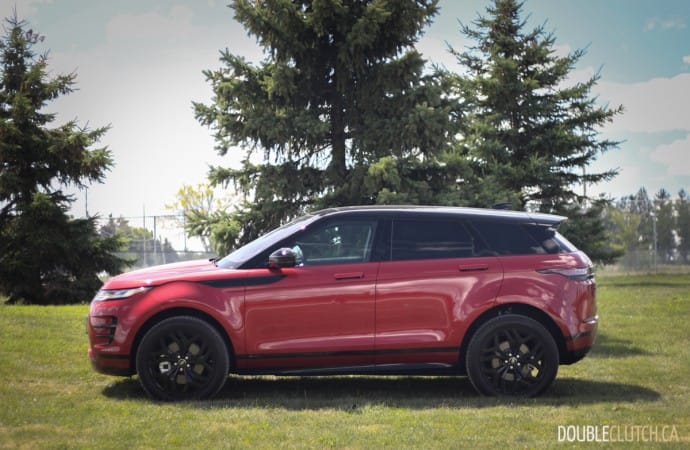
While time has been kind to the Evoque’s original design, eight years later it’s time for a refresh, so the Evoque gets a new platform and an available mild-hybrid powertrain for 2020. We spent our week with a top of the line 2020 Range Rover Evoque R-Dynamic HSE P300 AWD.
While the outgoing Evoque’s styling was likely its biggest asset, it has received a thorough make-over for 2020. The designers have done a fantastic job keeping the now signature styling cues intact, but modernizing it for a sleeker, more refined look. It has a new grille, lower vents, and slim LED headlights. A new black accent runs along the lower side of the crossover and it gains flush door handles. Around the back it has been completely redesigned including new longer LED taillights.
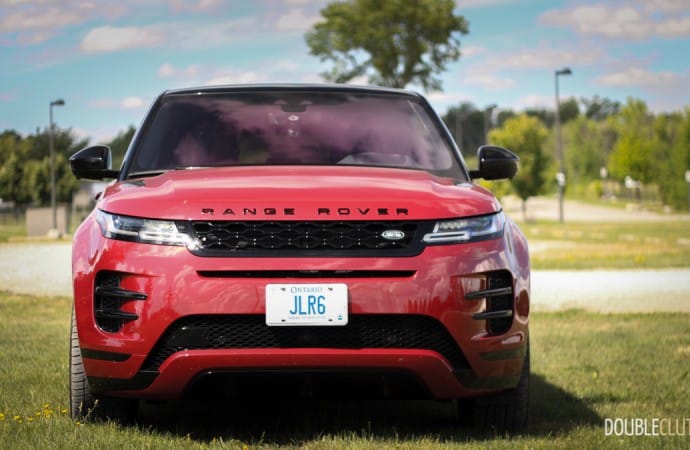
Overall it’s a much more fluid looking style and our tester, finished in Firenze Red and trimmed with the optional ($800) Black Package really looks great. This vehicle was equipped with optional gloss black 20-inch wheels to complete the look, and while I am not usually a big fan of red SUVs, it works very well on the Evoque’s fresh style. In fact I’d say this is the best looking compact SUV we’ve tested in a long while, by a good margin too. The new platform is slightly larger, both in length and width, adding on-road presence, but more importantly increasing rear legroom, cargo space and offering a more useful center console.
Second to its good looks, the interior quality is the most impressive aspect of the Evoque. This is where the previous generation really fell short with many Ford sourced bits that gave it a lower-rent feeling. All of that has changed, and the interior in our HSE trim level tester really does feel worthy of the Range Rover badge. The top-shelf materials and overall fit and finish in the new Evoque are impressive. The Deep Garnet leather on the perforated Windsor leather seats is extended onto the center sections of the door panels and dashboard, the steering wheel is beautifully crafted with leather and a metallic accent strip, and the tasteful chrome finishers around the vents and center stack are impeccably fitted.
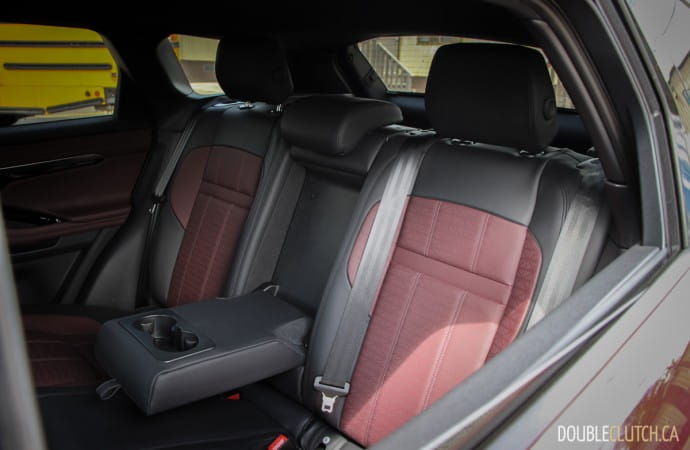
Storage up front is adequate with a decent sized center console bin, deep door pockets and two side-by-side cupholders in the console. The extra legroom in the rear is appreciated and the Evoque offers plenty of space for two kids. Adults fit fine in a pinch, but expect maybe a little bit of complaining on longer trips. Cargo room behind the rear seat is right in line with others in the segment, and of course the split rear bench folds flat for bulky or awkward cargo.
The Evoque has gotten some big technology updates as well, most notably the 10-inch dual touchscreen setup known as InControl Touch Pro Duo; the screens are responsive, vibrant and easy to read, but the menus and various functions can be difficult to get used to. After a few days, I was getting pretty efficient at it – the exception being the steering wheel controls that are very sensitive and easy to make mistakes with. The upper screen has an adjustable tilt angle, which is handy, especially when optioned with the glass panoramic roof like our tester, to keep the sun’s rays off the screen.
The digital instrument cluster can be customized to you liking and even has the ability to display a full-screen map similar to Audi’s Virtual Cockpit. It’s not terribly useful, but it looks great and is a good conversation starter with first-time passengers. One other nice surprise is a blind spot sensor on each door panel that lights up when traffic is passing by, notifying occupants about to their door – very useful for anyone who street parks in the city.
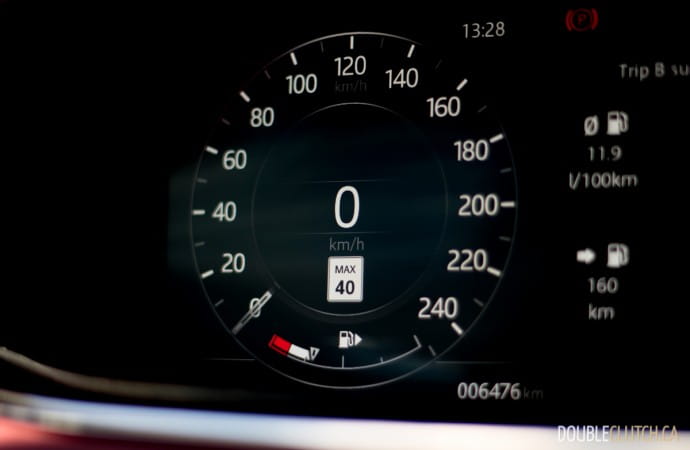
There are two powertrains available in the new Evoque, both based on the 2.0-liter turbocharged four-cylinder. A standard P250 version tuned to 246 horsepower and 269 lb-ft. of torque at 1,300 RPM, and the P300 version found here uses the same engine tuned to 296 horsepower and 295 lb-ft. of torque at 1,500 RPM. What’s interesting is that the P300 also utilizes a 48-volt mild hybrid system that recovers energy during deceleration to charge a battery located under the floor. Battery power is then used to boost acceleration and allows the engine to shut down when coasting to reduce fuel consumption.
Regardless of engine choice, power flows to all four wheels through a nine-speed automatic transmission, which is eager to downshift providing easy access to power, but is rather clunky at low speeds and when pulling away slowly. The R-Dynamic P300 version is pretty quick, especially for a compact SUV, accomplishing 0-100km/h in a reported 6.6 seconds. The worst part of the driving experience unfortunately is pulling away from stops – which occurs a lot in the city.
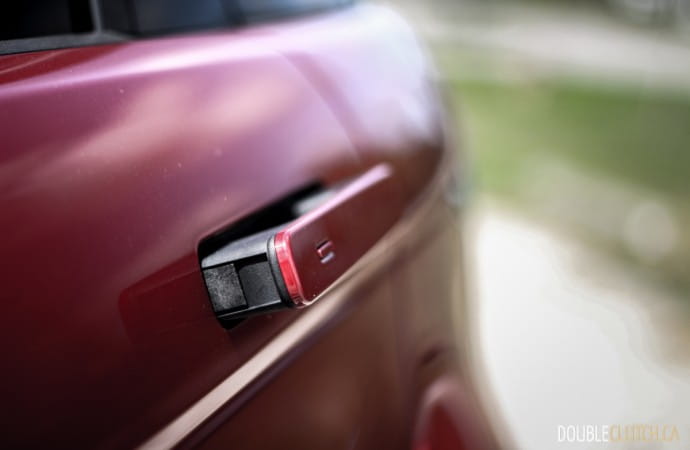
As you step on the accelerator, the slow initial throttle response, tied with some turbo lag, creates a situation where the Evoque is very slow to pickup speed as you ease into the throttle. Naturally you give it more throttle and the turbo steps in, right around that same time the transmission decides to hold the gear and you’re met with a sudden and abrupt boost of power. For this reason, it’s difficult to drive smoothly with the P300 in the city, and that can be frustrating. The four-cylinder also has a tendency to sound a bit agricultural at idle, which can be a distraction from an otherwise impressive looking crossover.
Out on the open road, the Evoque R-Dynamic redeems itself quite readily. Handling is taunt and turn-in is sharp, meaning the Evoque handles corners with more composure than you might expect. On the highways and country roads, it feels very lively and confident, with the LED headlamps creating daylight in front as I barrelled down dark backroads. The ride is somewhat firm thanks to the large wheels, but not so much that it takes away from the Range Rover experience. The cushy seats definitely help to ease any harshness from the road. Sound insulation is well done, with minimal noise in the cabin at highway speeds.

Despite the P300’s mild hybrid system I did not see particularly impressive fuel economy during my time with the Evoque, ending the week with an average of 11.2L/100km, even after combining a three-hour highway trip into the mix. It’s not a terrible number, but it’s not a good as we’ve seen from rivals with similar output. The Evoque P300 does prefer premium gasoline as well.
One thing to keep in mind when considering the Evoque is that despite its fashionable looks, it is still very much a real Range Rover. The all-wheel-drive system is capable of navigating the harshest winter conditions and the Terrain Response system allows drivers to select one of five drive modes that optimize the systems to handle your specific terrain with as much grace as possible. You can even equip an Evoque with wade-sensing technology that will allow you to forward water crossings. While it’s not exactly a Jeep Wrangler, the Evoque is very capable not only on the road, but on the trail, which is more than can be said for nearly every competitor.
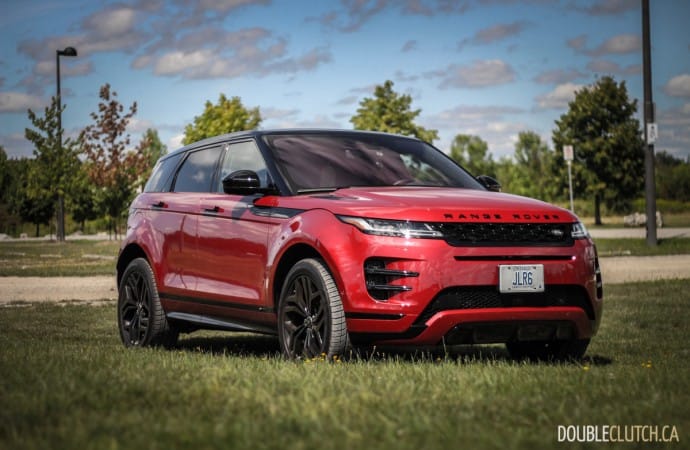
All the style, capability and panache of the Evoque comes with a price. While a base model can be had for a reasonable $47,950, the R-Dynamic like our tester starts at $53,500 and goes up from there for the R-Dynamic HSE at $62,500. Our tester had close to $8,000 in additional options including heads-up display ($1000), heated and massaging front seats ($800), fixed panoramic roof ($1,300, add another $500 if you want the sliding panoramic roof), electronic steering column adjustment ($510), black contrast roof ($500), the black exterior trim package ($800), and more.
The total sticker came out over $72,000, and there were still a lot of option boxes let unchecked such as adaptive dynamic suspension, ventilated seats and surround sound. The base price of the Evoque is a few thousand higher than its natural competitors such as the Volvo XC40 (reviewed here) and the BMW X2, and once you get into the well-optioned top trims like our tester you’re well into the larger Range Rover Velar’s territory.
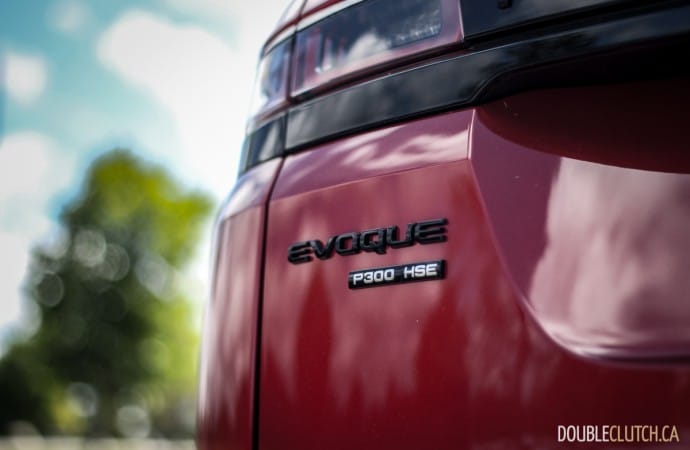
The Range Rover Evoque is a very unique offering, and in some respects, I can see it commanding a taller price than some luxury compact SUV competitors for its heritage, off-road prowess and more upscale interior. While I do think the Evoque’s pricing strategy is a bit ambitious, it’s not a large departure from outgoing model, so I have every expectation that this improved version is going to sell as well or better than its predecessor.
See Also:
2017 Land Rover Discovery Sport Dynamic
2019 Volvo XC40 T5 R-Design
2019 BMW X2 M35i xDrive

